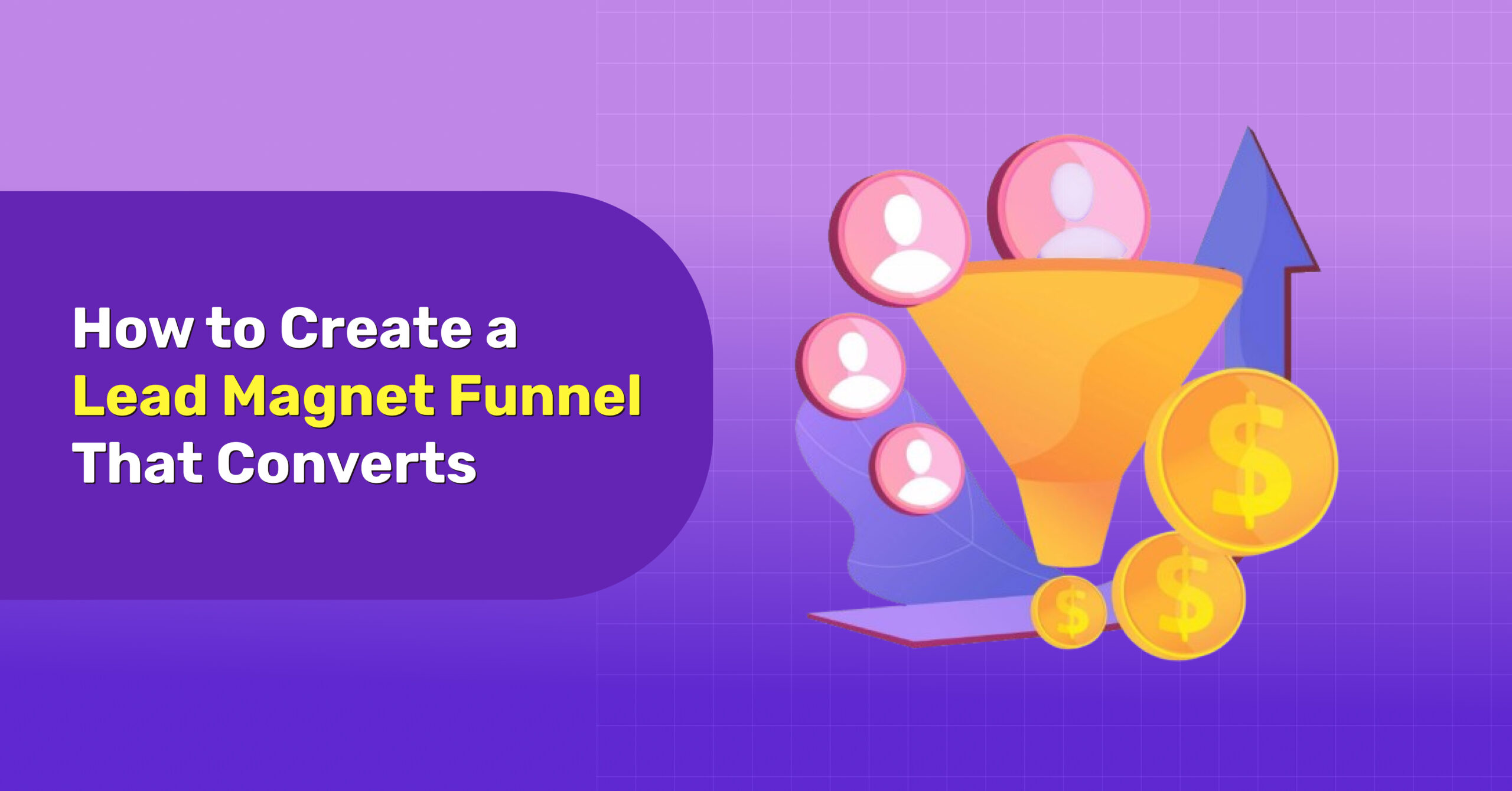
11 Steps to Building a High Converting Lead Magnet Funnel
You spend hours creating a free guide and share it everywhere. At first, it feels like a win, but soon downloads stop turning into conversations, and inboxes stay quiet.
The problem is what happens next.
Without a clear path, new signups lose interest. A lead magnet funnel provides that path, turning signups into engaged readers and loyal customers.
In this guide, you will learn how to create a lead magnet funnel that drives real results.
What Is a Lead Magnet Funnel and Why Does It Work?
A lead magnet funnel is a structured sequence that takes a new subscriber from their first interaction with your content to becoming an engaged follower or customer.
It starts with a lead magnet. You should implement lead magnet ideas differently depending on the Top of the funnel and the Middle of the funnel.
| Category | Top of Funnel | Middle of Funnel |
|---|---|---|
| Lead Magnet Examples | Giveaways, blog post downloads, influencer collabs, free tools, and field marketing | Webinars, case studies, whitepapers, product demos, industry reports |
| Primary Goal | Build awareness, attract a broad audience | Nurture interest, qualify leads |
| Data to Collect | First name, last name, email | Name, company name, email, compliance needs or preferences |
| Key Notes | Keep it light and fun, tag by source for ROI tracking, don’t overcomplicate | Tie offers closer to product, use nurture streams, avoid heavy-handed sales tactics |
Unlike one-time freebies, a lead magnet funnel creates a journey that keeps the audience engaged, nurtures the relationship, and increases the chances of conversion.
How to Create a Lead Magnet for Maximum Lead Generation
Creating a lead magnet is not just about giving away a freebie. It’s about solving a real problem for the right audience and guiding them on a journey with your business. Here’s how to plan and put it to work:
- Know your audience: Define who you serve, the results they want, and the pain points holding them back.
- Match problems with solutions: Align those pain points with services you already offer, then pick the persona you want to focus on.
- Choose one clear problem: Select a challenge they can solve with your guidance (e.g., branding, SEO basics, templates).
- Design the lead magnet: Create a simple resource, checklist, template, guide, or mini-course that provides quick wins and real value.
- Clarify its value: Be clear on what it covers, what problem it solves, and what result readers can expect.
- Promote it smartly: Share through landing pages, blog posts, popups, or social channels so the right people see it.
- Tag and track: Segment leads by source or interest so you can personalize follow-ups.
- Map the next step: Plan how you’ll nurture these leads through valuable emails and resources.
11 Steps to Create a Lead Magnet Funnel That Converts
Here are practical ways to create a lead magnet funnel that converts:
1. Identify what resources you can offer as lead magnets
Before you dive into creating a lead magnet, you need clarity on who you are targeting and why. Strategizing is the first step of the lead magnet funnel.
The first step in building your lead magnet funnel is deciding what free resource you’ll offer to attract leads.
Here’s how you can proceed:
- Choose your target group: Decide which customer persona you want to focus on.
- List their pain points: Identify the problems they face that you can help solve.
- Match your service: Pick one service that can address a problem they can solve on their own with guidance.
- Create the resource: Example: checklist, template, or guide that’s easy to follow.
- Define the value: Clearly show the topic, problem it solves, expected result, and overall benefit.
Your goal is to design something that connects your ideal customer’s pain points with the value your services bring.
2. Create a High-Value Lead Magnet
A high-value lead magnet addresses a specific problem for your audience and provides them with an immediate benefit. Think of it as a helpful resource that earns you permission to keep in touch through email.
Popular examples include:
- Checklists
- Templates
- Mini-courses
- Calculators
- Cheat sheets
- Worksheets
- Swipe files
- Quick guides
- Short video tutorials
The key is relevance. Match the free resource to your audience’s biggest pain point.
Quick Tip: For deeper strategies on generating leads, see this guide on lead generation funnels.
3. Capture Leads With a Simple Opt-In Form
An opt-in form is the bridge between your content and your audience. Its job is simple: invite visitors to share their details in exchange for something valuable.
To work well, it should stay short: often just a name and email so that people can sign up without hesitation.
Placement matters too: put forms on landing pages, at the end of blog posts, or in popups where attention is high.
Tools like Fluent Forms make this process easy, letting you connect directly with FluentCRM for tagging, automation, and smooth follow-up.

A clear call to action with value to make the invitation feel personal and worth clicking.
4. Investigate your lead
Once you’ve captured a lead, the real work begins. A name and email are just the starting point. To nurture effectively, you need to understand who they are, what they value, and how they behave.
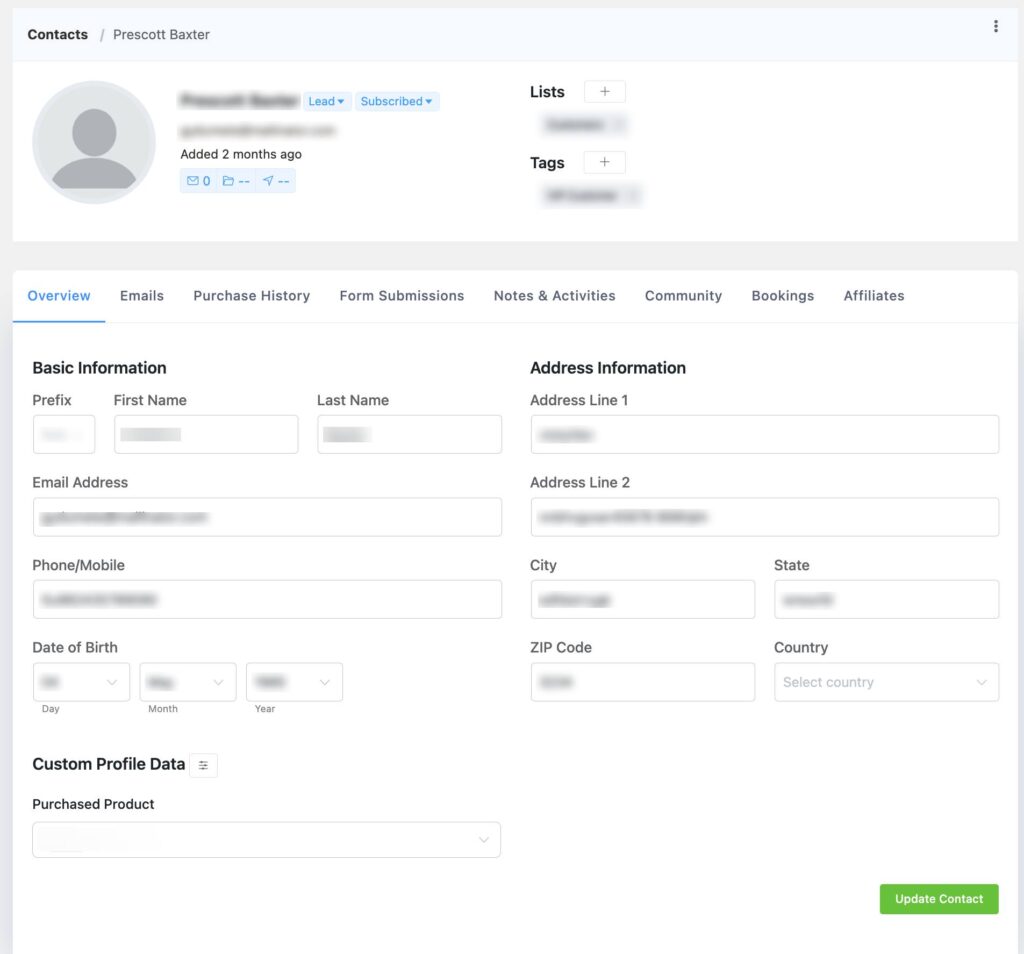
Investigating your lead helps you understand their behavior and preferences, all while respecting their privacy. The more you know, the more relevant and helpful your follow-ups will be.
- Watch interactions such as clicks on case studies or demo videos
- Track email engagement to see what topics spark interest
- Note content preferences from lead magnets or blog visits
- Adjust email frequency based on how often they respond
- Review website behavior like cart activity or pricing visits
What really matters is seeing the story behind the clicks, so you can respond like a guide instead of throwing guesses.
5. Always Thank Your Subscriber with More Value
When someone shares their email with you, they’re giving you a little piece of trust. A plain thank-you email is mandatory, but when you give them something extra, it goes a long way. You can design your thank you page considering that.
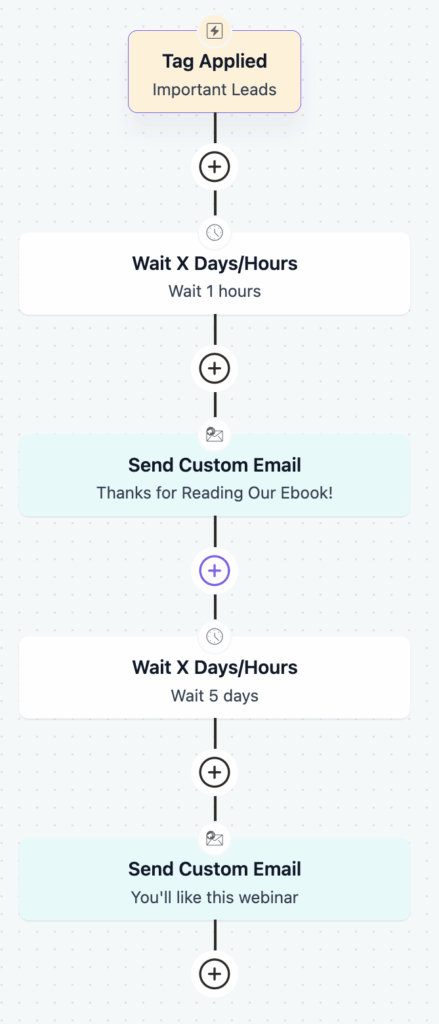
Here are thoughtful ways to thank them while adding real value:
- Provide guides or mini-courses to nurture them toward buying
- Share gated content only when it solves important issues
- Offer first-time discounts to turn curiosity into purchases
- Surprise with exclusive deals to spark loyalty
- Give free consultations to build trust with serious leads
You need to remind them, at every step, that choosing to hear from you was a good decision.
Quick Tip: Gmail’s new manage subscriptions feature shows how many emails you sent to your audience and what value you provide in one page. Make sure to provide value, without annoying your audience.
6. Build a Nurture Sequence that Warms Leads
When someone downloads your freebie, their interest is at its peak. A nurturing sequence keeps that momentum by guiding them through small, valuable steps.
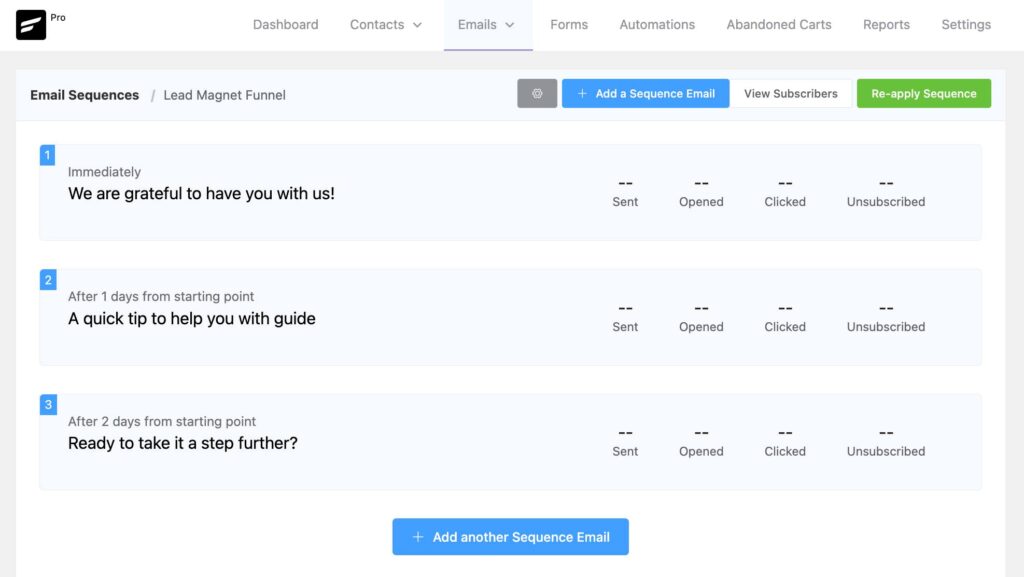
Start with quick wins to build trust, follow with stories that prove your advice works, and then offer deeper insights or a gentle next step.
With FluentCRM, you can set this up easily inside WordPress using sequences and conditional logic, keeping your emails relevant and personal.
7. Reviews and feedback
As part of your post-purchase campaign, you can ask customers for feedback on their purchases. This is a good time to send out surveys. You can also encourage customers to leave a review or share photos on social media.

Feedback and reviews are a great way to refine your offering and better understand how your customers’ expectations match up with reality. They are also a great opportunity for you to get some social proof to use on your landing pages and social media.
Don’t skip this part of your lead magnet funnel.
Quick Tip: You can check out successful feedback email examples for inspiration.
8. Refer a friend
Take the opportunity for new lead generation by encouraging customers to refer a friend after making a purchase. Utilize your lead magnets to convince customers to share your content with their contacts.
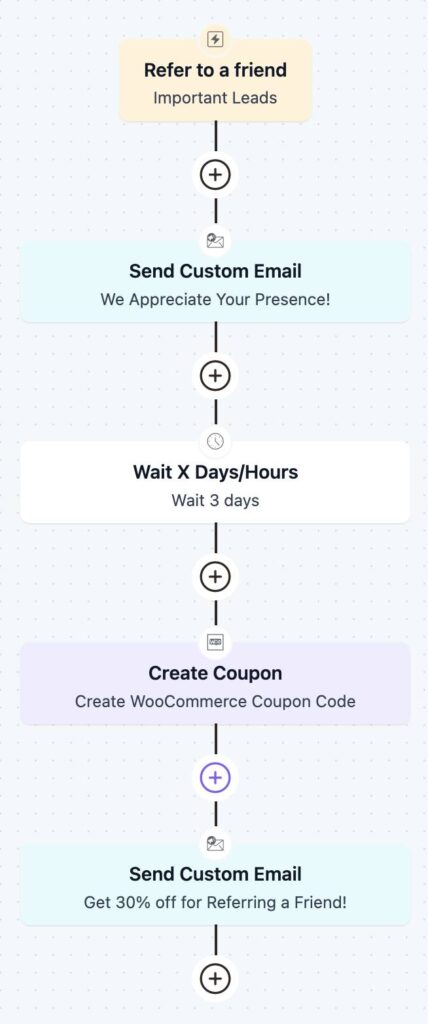
One of the easiest ways to do this is by offering an incentive like a discount code or coupon that customers can share with their friends, family, and colleagues. By adding this simple step to your lead magnet funnel, you can motivate your customers to spread the word about your product or service after they’ve made a purchase.
Once a new contact signs up their email address, they go straight in at the top of your lead magnet funnel, and the process starts again.
9. Product recommendations
A key part of any post-purchase email flow is thoughtful product recommendations. The goal is to genuinely guide customers to products or services that complement what they’ve already bought.
For example, someone who purchased a course on writing a novel may benefit from a follow-up course on marketing their book. Recommending relevant products shows you understand their journey and helps them achieve more success.
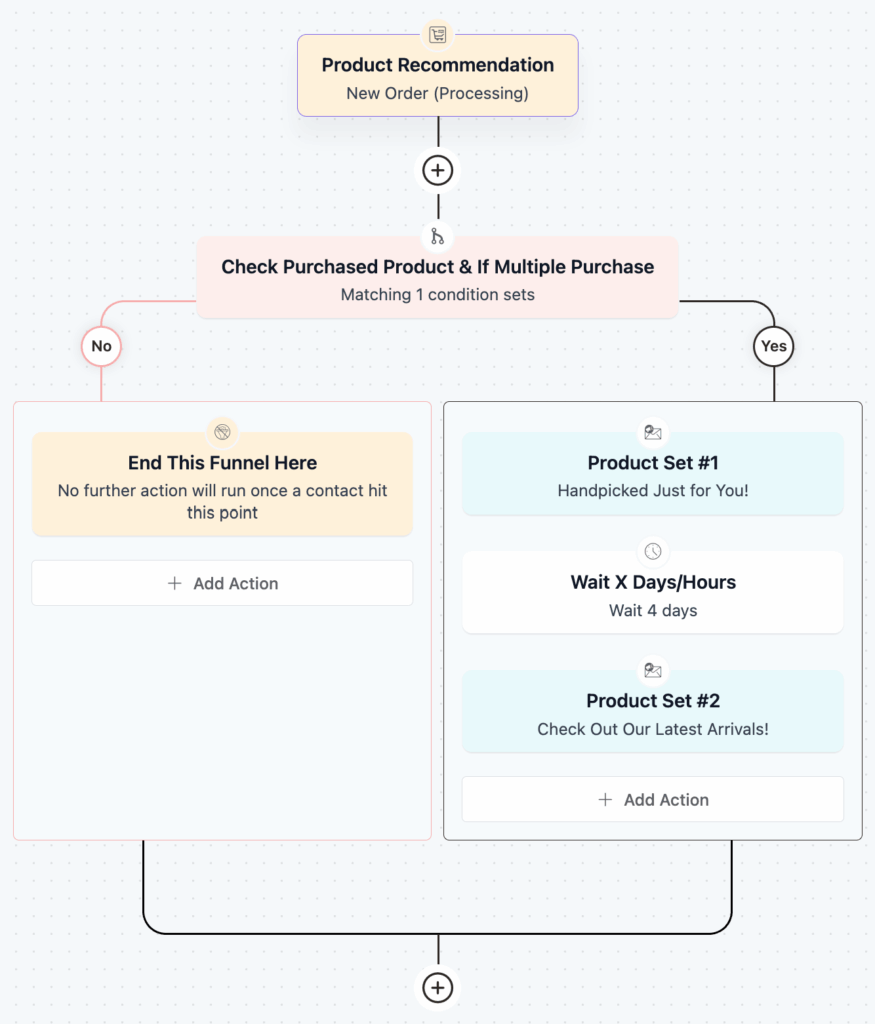
Cross-selling in this way also strengthens trust. Customers are more likely to engage with suggestions that feel tailored to their needs rather than generic promotions. When done well, product recommendations become a natural extension of your lead magnet funnel, encouraging repeat purchases while continuing to deliver value.
Quick Tip: You must know which one goes with your leads, cross-selling, or upselling for your lead funnel’s better performance.
10. Measure and Improve Your Funnel
A lead magnet funnel is never truly finished. Regularly reviewing its performance and making small improvements ensures it stays effective and continues to engage your audience.
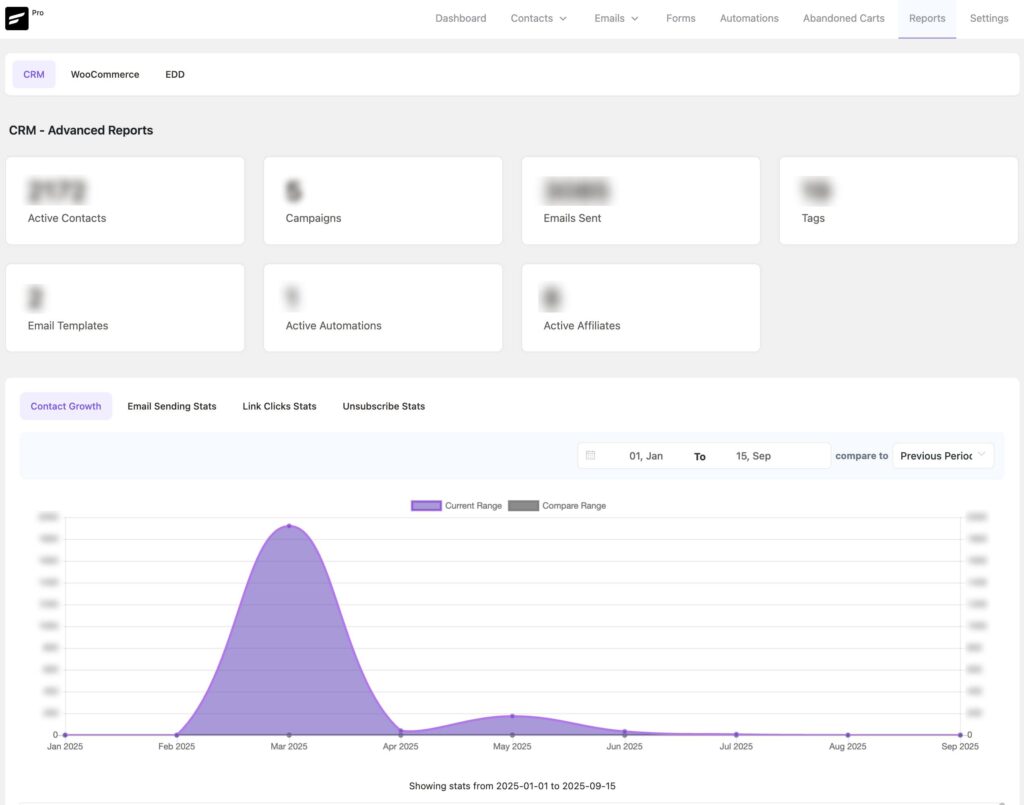
- Freebie downloads: Ensure the content is delivered and accessible.
- Open rates: Test subject lines and preview text to gauge interest.
- Click rates: Track which content and calls-to-action resonate most.
- Conversion rates: Measure whether subscribers take the next desired action.
- A/B tests: Test one variable at a time, subject line, send time, or freebie format.
- Segmentation: Group subscribers by behavior or source to send more relevant follow-ups.
- Report Analysis: Track your email reports regularly and tweak your plans accordingly.
Focus on the email key performance metrics and simple tests to uncover what works best.
11. Consider Integrating AI in Your Lead Magnet Funnel

AI is transforming every step of the lead magnet funnel, making it smarter, faster, and more personalized. It can deliver instantly, tailor follow-up emails to each user’s behavior, and provide real-time support through chatbots.
For example, US agencies use AI-powered quizzes that adapt questions based on visitor responses, offering custom recommendations while capturing highly qualified leads. Service brands like clinics and law firms deploy chatbots to answer questions, schedule appointments, and pre-qualify leads immediately, reducing manual work and boosting conversion speed.
Leveraging AI in email marketing lets you nurture leads with precision, predict their needs, and guide them toward conversion with less guesswork.
Quick Tip: For a deeper dive into practical applications, check out AI in email marketing for key trends and proven ways to leverage it.
Common Mistakes to Avoid in Lead Magnet Funnel
Even the most promising lead magnet can fall flat if certain missteps aren’t avoided. Recognizing and steering clear of these common pitfalls ensures your funnel attracts, nurtures, and converts effectively.
Key Mistakes to Watch Out For:
- Generic lead magnets: Fail to address a specific problem, leading to disengagement.
- Lack of a clear next step: Without a defined path, leads may lose interest and disengage.
- Use of Spam Words: Skip spam trigger words in your email as much as possible.
- Overcomplicating the opt-in process: Lengthy forms or unnecessary fields can deter potential leads.
- Delayed delivery of the lead magnet: Immediate access is crucial; delays can erode trust.
- Neglecting to follow up: Without timely and relevant follow-up, leads may forget or lose interest.
- Not segmenting your audience: Treating all leads the same can result in irrelevant messaging.
- Ignoring analytics: Without tracking performance, it’s challenging to optimize and improve.
- Skipping Authentication: Without proper email authentication, your email will land in spam.
- Failing to refresh content: Outdated or stale lead magnets can diminish perceived value.
By being aware of these common mistakes and proactively addressing them, you can create a lead magnet funnel that not only attracts but also nurtures and converts leads into loyal customers.
Turn Every Lead into a Lasting Connection
A lead magnet funnel is more than just a way to collect emails.
It is the path that takes a visitor from curiosity to trust and from interest to action. Each step, from creating a useful freebie to following up thoughtfully and measuring results, shapes how your audience feels about your brand.
Focus on giving value, guiding gently, and improving little by little. Do this, and your funnel will not only grow your list but also build real connections that last.
Samira Farzana
Once set out on literary voyages, I now explore the complexities of content creation. What remains constant? A fascination with unraveling the “why” and “how,” and a knack for finding joy in quiet exploration, with a book as my guide- But when it’s not a book, it’s films and anime.



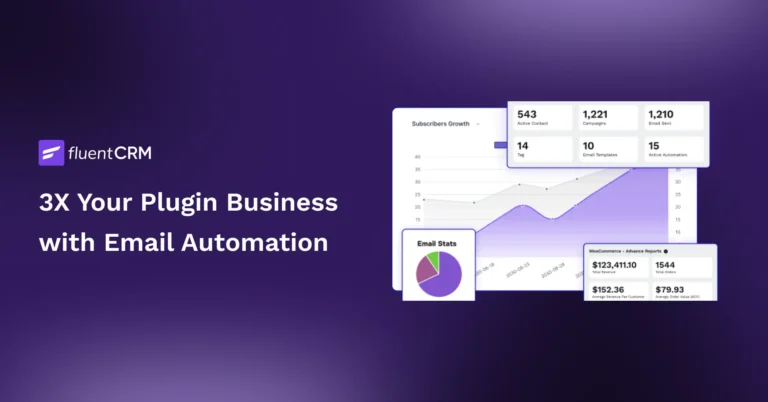
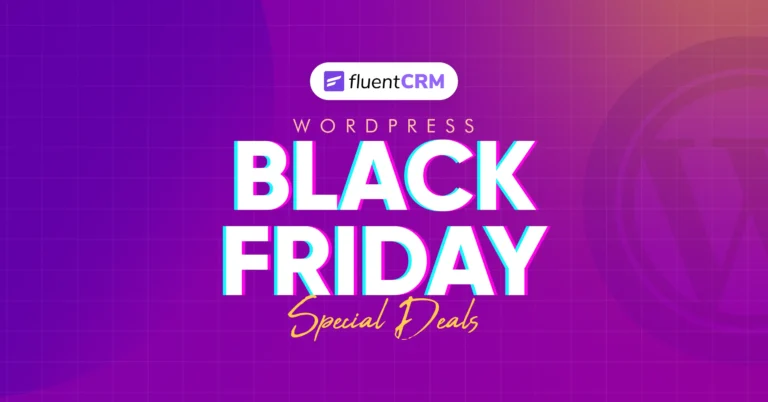
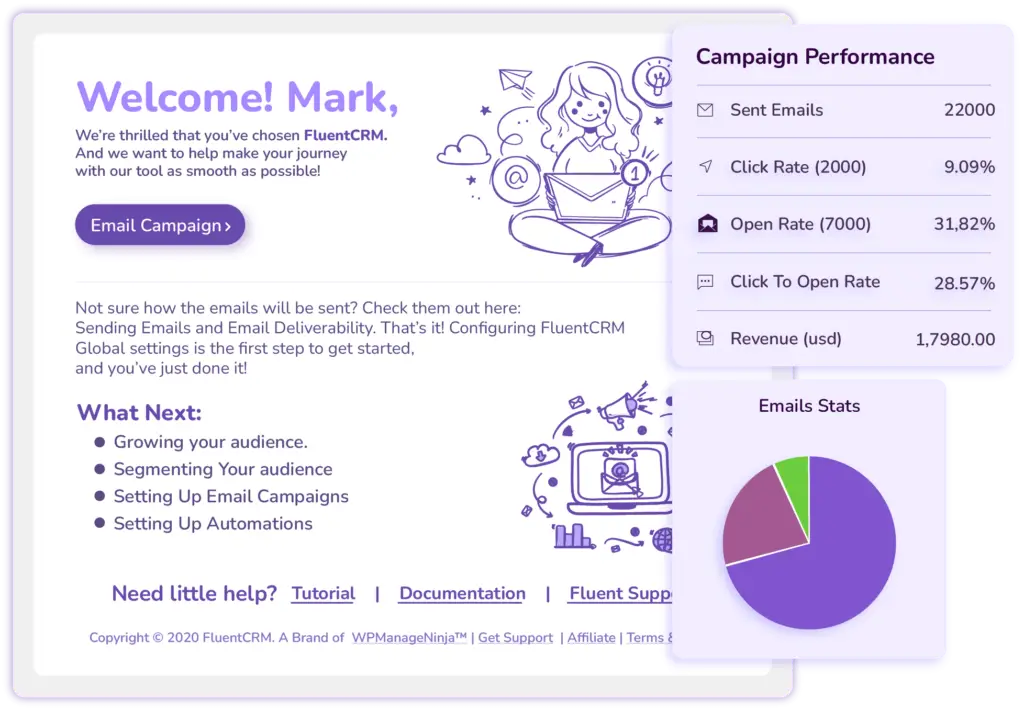
Leave a Reply